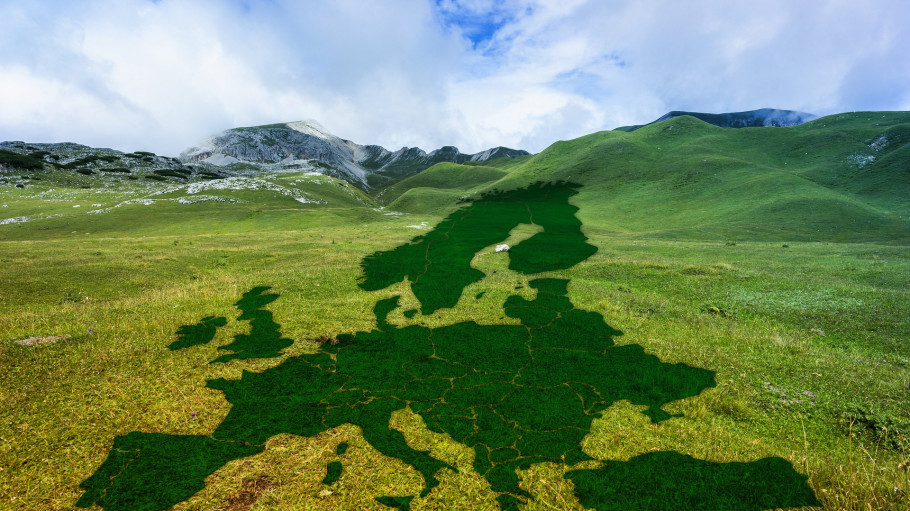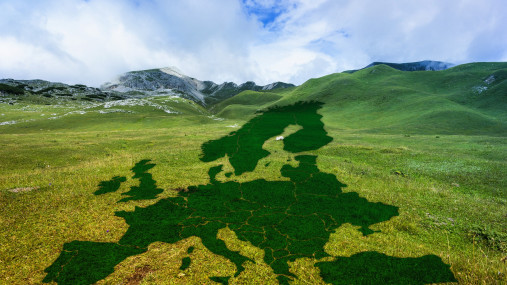
Publications » Position papers » A Green Deal on Steel (update)
A Green Deal on Steel (update)
Downloads and links
Recent updates

Europe has the unique opportunity to lead the transformation of its economy to a future in which it is CO2 neutral, environmentally responsible, circular and able to compete internationally, addressing third country trade distortions without inhibition. Steel is central to the EU economy, and it underpins the development of major manufacturing sectors right along the value chain. Our industry sustains 2.6 million direct and indirect jobs in the EU[1].
To make the EU’s recovery plan and green transition a success, a Green Deal on Steel should be agreed between EU steel industry and the EU institutions and governments, with a clear action plan establishing a market for green steel in the period 2021 to 2030. This plan can serve as a blueprint for other sectors, and help the industry out of the worst economic crisis in decades.
Why steel?
Because the EU steel industry:
What can we achieve?
The EU needs a supportive regulatory framework and enabling policies to empower the European steel industry to contribute to the EU’s climate objectives and sustainable growth targets. The sector would be able to develop, upscale and roll-out new technologies that could reduce EU steel production’s CO2 emissions by 30% by 2030 compared to 2018 emissions (or about 55% compared to 1990) and by 80 to 95% by 2050, while contributing to greenhouse gas mitigation across all sectors.
However, changing circumstances resulting from the COVID-19 crisis will have to be taken into account. The European steel industry and its value chain have been severely affected by its impact. In September 2020 approximately 40% of the steel workforce was still affected by temporarily lay-offs and reduced working, while average production in the period from March to September was 21% below the levels of previous year. Recovery is very slow and fragile, and stockpiling in third markets may deprive the European steel industry of a fair chance to rebound.
A plan of action: A Green Deal on Steel
In light of the EU’s climate ambition, agreement on a comprehensive plan of action to implement it is urgently needed. A regulatory framework is required to allow companies and investors today to make investment decisions for the coming decade and beyond.
A Green Deal on Steel should not be necessarily a single policy. The related Action Plan would rather outline how existing EU policy fields shall be updated, combined and expanded in order to achieve the objectives of carbon neutrality, secure jobs and a prosperous industry, while supporting field-testing of best practice in low-carbon steelmaking. The German “Steel Action Concept”[3] is a good example of such an approach undertaken at national level. This initiative can, and should, serve as the basis for agreement on a similar initiative at an EU level, with a coordinated approach for the EU’s climate, energy, trade, and industry-related policies.
These Green Deal on Steel actions need to be compatible with, and inclusive of, the various facets of the EU’s broader Green Deal climate policy; the Green Deal will have a wide and varied impact across all EU industries, thus it must be coherently constructed and deployed. The success of the Green Deal depends on the horizontal, cross-sectoral integration of an industrial strategy and needs to be implemented throughout the full value chain.
The policy recommendations below are essential to succeeding in the aims of ensuring the EU steel industry remains on track to meet its envisaged emissions reductions targets (i.e. 30% by 2030 and 80-95% by 2050) whilst also remaining competitive globally and finding a sustainable market for its green steel products.
[1] The impact of the European steel industry on the EU economy. Oxford Economics, May 2018
[2] Highest Technology Readiness Levels (TRL) are achieved in a large number of projects, several large-scale projects already started, including hydrogen-based steelmaking, carbon capture and usage, and carbon capture and storage.
[3] https://www.bmwi.de/Redaktion/EN/Publikationen/Wirtschaft/the-steel-action-concept.html

Brussels, 27 November 2024 – The European steel industry is at a critical juncture, facing irreversible decline unless the EU and Member States take immediate action to secure its future and green transition. Despite repeated warnings from the sector, the EU leadership and governments have yet to implement decisive measures to preserve manufacturing and allow green investments across Europe. Recent massive production cuts and closure announcements by European steelmakers show that time has run out. A robust European Steel Action Plan under an EU Clean Industrial Deal cannot wait or manufacturing value chains across Europe will simply vanish, warns the European Steel Association.
Brussels, 12 November 2024 - Ahead of Commissioner-Designate Séjourné’s hearing in the European Parliament, European steel social partners, supported by cross-party MEPs, jointly call for an EU Steel Action Plan to restore steel’s competitiveness, and save its green transition as well as steelworkers’ jobs across Europe.
Brussels, 29 October 2024 – The European steel market faces an increasingly challenging outlook, driven by a combination of low steel demand, a downturn in steel-using sectors, and persistently high import shares. These factors, combined with a weak overall economic forecast, rising geopolitical tensions, and higher energy costs for the EU compared to other major economic regions, are further deepening the downward trend observed in recent quarters. According to EUROFER’s latest Economic and Steel Market Outlook, apparent steel consumption will not recover in 2024 as previously projected (+1.4%) but is instead expected to experience another recession (-1.8%), although milder than in 2023 (-6%). Similarly, the outlook for steel-using sectors’ output has worsened for 2024 (-2.7%, down from -1.6%). Recovery projections for 2025 are also more modest for both apparent consumption (+3.8%) and steel-using sectors’ output (+1.6%). Steel imports share rose to 28% in the second quarter of 2024.